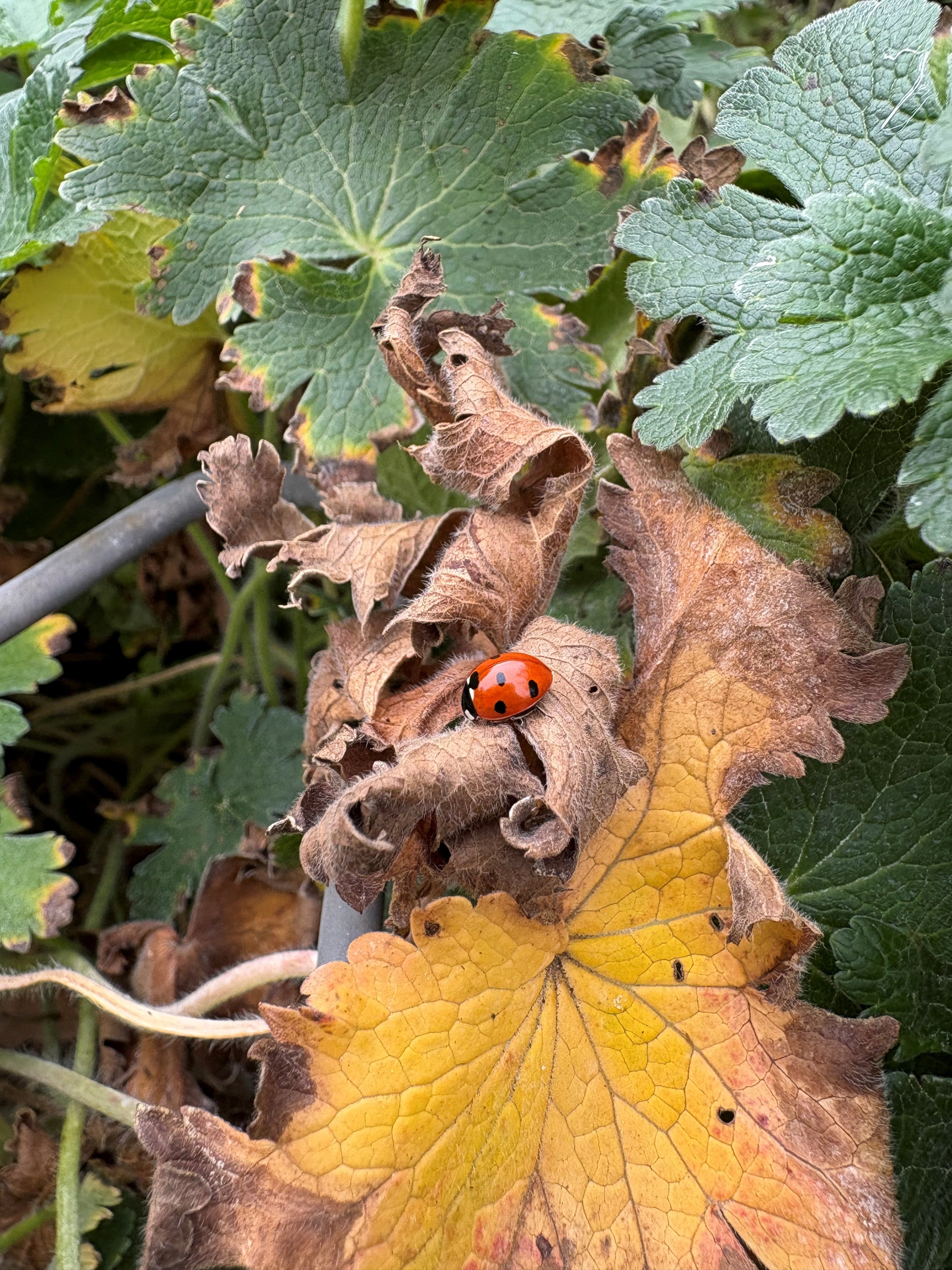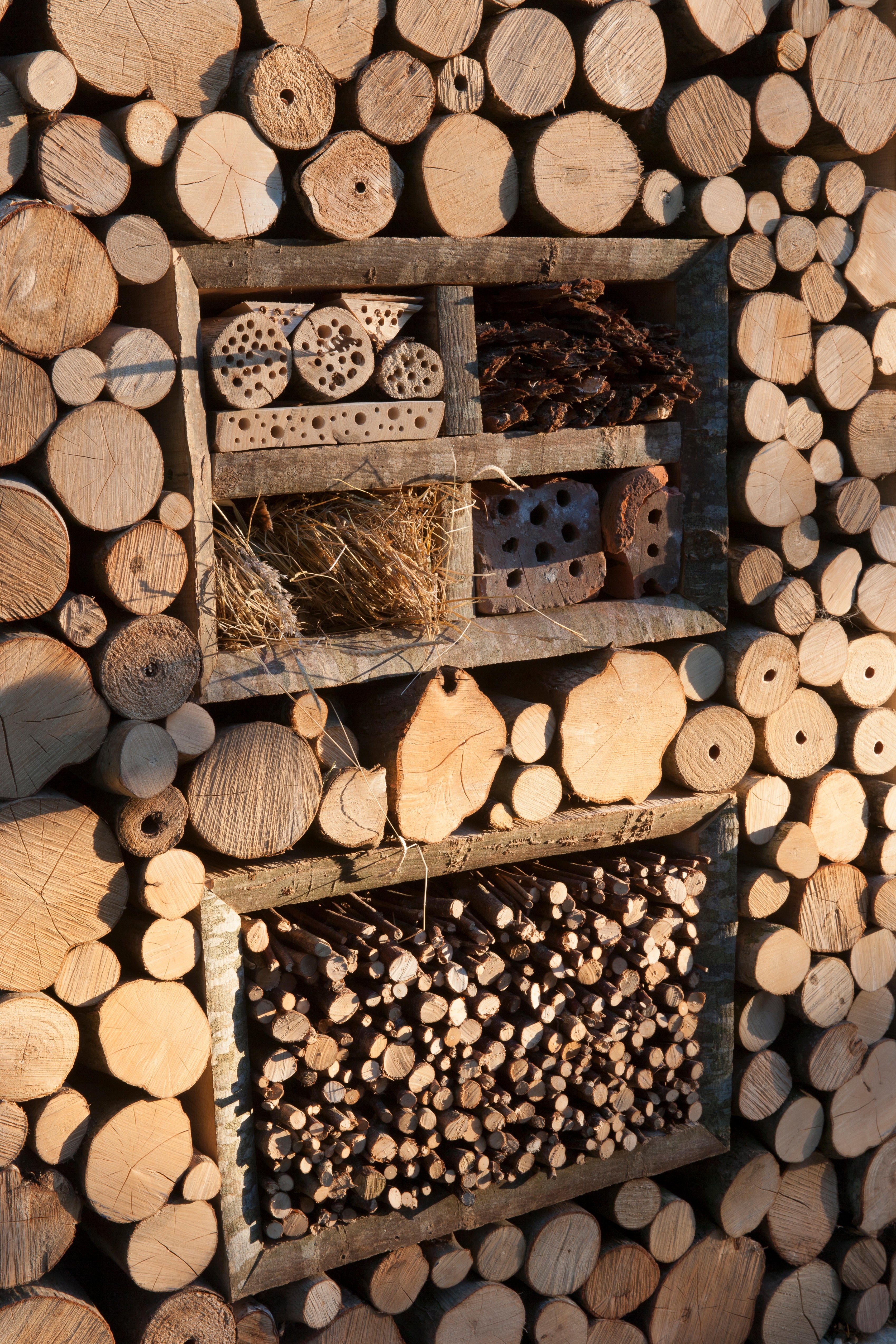
Gardeners preparing for autumn are likely to encounter a surge of ladybirds seeking shelter among foliage and debris.
This abundance follows a bumper year for the beneficial insects, attributed to the warm spring and summer temperatures that significantly increased aphid populations – their primary food source.
Warmer conditions accelerate the aphids' development and reproductive cycles, leading to more generations and, consequently, a greater food supply for ladybirds.
Horticultural charity Garden Organic has confirmed this trend, reporting a substantial increase in ladybird numbers at its Ryton, Coventry, demonstration garden throughout September.

Ladybird expert Professor Helen Roy, from the UK Centre for Ecology & Hydrology and honorary fellow of the Royal Entomological Society, says the UK Ladybird Survey (which aims to encourage the recording of all species of ladybird found within the UK) has received high numbers of seven-spot, 14-spot and harlequin ladybirds, but also specialist species such as the hieroglyphic ladybird – a bronze-brown bug found on heathlands.
“Aphid-feeding ladybirds such as seven-spot ladybirds and two-spot ladybirds are able to use various cues to determine whether the aphid colony is increasing or about to crash – and will lay their eggs near a population that’s going to increase and sustain their larvae through their development.”
Harlequin ladybirds, which were first reported in the UK in 2004, might affect numbers, however.
“They spread very rapidly and are now found across the UK in high numbers throughout the year. Harlequin ladybirds are voracious predators and while they will eat lots of aphids, they also feed on other insects including ladybird larvae, hoverfly larvae and other insects that are beneficial to gardeners,” says Roy.
“Our studies have shown they cause declines of some other species including, as an example, dramatic declines in two-spot ladybird in the UK.”
Ladybirds go through four stages of development. It takes around two months to develop from egg to larva, then pupa, and finally emerge as an adult.
Mating begins in May and the next generation emerges in August – but you’ll probably spot them up until the end of October in large numbers. The new adults have just a couple of months to build up enough fat reserves in their bodies to overwinter.
So, what can we do to help our ladybirds through the cooler months?
Don’t overtidy
Think about creating a balanced, biodiverse ecosystem with plenty of habitats, advises Garden Organic gardener Jules Duncan.
“Now the nights are drawing in and there is the temptation to tidy up the garden and retreat indoors – but resist that temptation.
“Fallen leaves, dry sticks and hollow stems are the perfect hiding place for these gardener’s friends. They particularly like flat-topped flowers such as fennel, yarrow, angelica, alyssum and dandelions.
“In our organic garden, the seven-spot likes nothing better than leaf litter to weather the storms and we regularly find two-spots nesting in groups in the crevices of our compost bays.”
Build log piles

Log piles are easy to put together and provide another great area for ladybirds to huddle together for shelter, suggests Duncan. And if you find them in your house, don’t turn them out into the cold, instead relocate them to the corner of a shed or a quiet spot in the garden.
Create a nettle patch
Leave a small patch of nettles to provide a source of food for aphids – a primary food source for ladybirds – when they emerge next spring, so the whole cycle can begin again, Duncan advises.
Stop using pesticides
“If you want to encourage two-spot and seven-spot ladybirds, we recommend stopping using pesticides because they can be non-discriminatory, attacking the pests as well as the beneficial insects,” says Duncan. By spraying you kill off the food source for the ladybirds, which in turn will reduce their populations.
The seven things every driver should do ahead of winter
Is gaming the new smoking for teenage boys?
3 easy DIY jobs you can do this weekend to give your home a fresh look
Jamie Lee Curtis breaks down in tears over Charlie Kirk’s death
Molly-Mae’s sweet moment with Bambi cut by toddler’s biting outburst
Why Trump blimp won’t make an appearance at this week’s UK state visit







